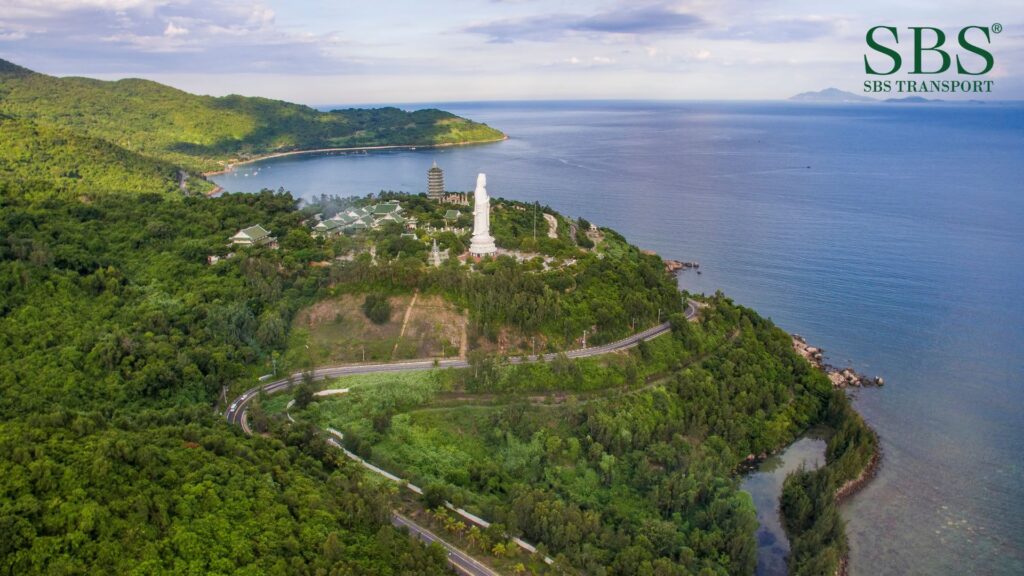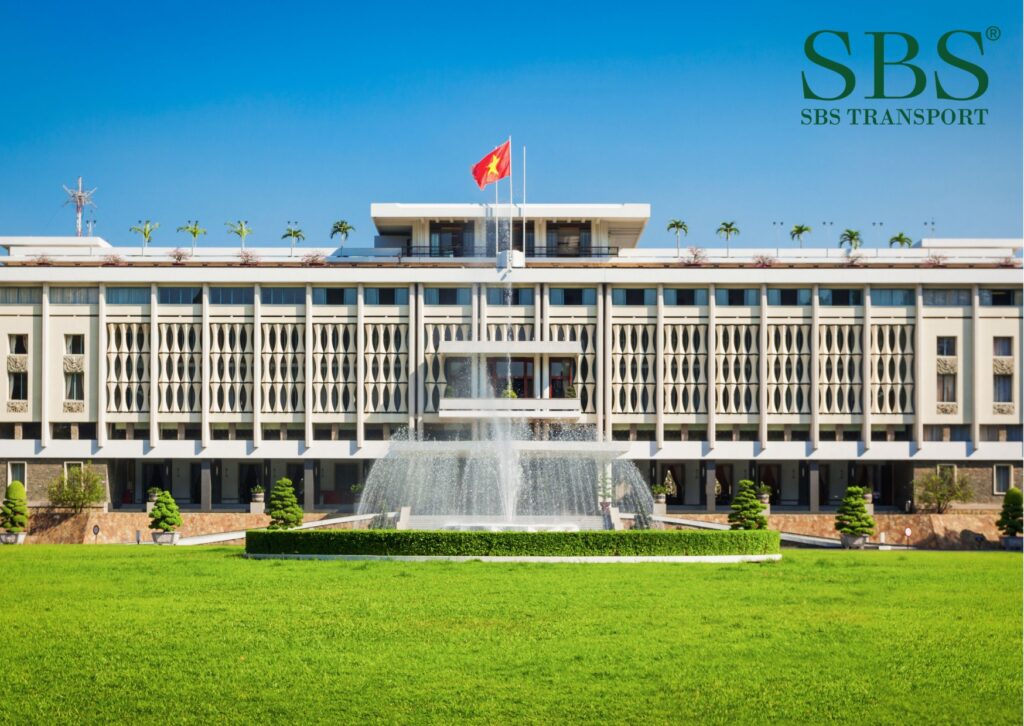Spring travel at the beginning of the year has long been a unique cultural tradition deeply embedded in the hearts of Vietnamese people. Beyond simple sightseeing trips, spring travel holds profound spiritual significance, symbolizing prayers for a peaceful, lucky, and prosperous new year. Let’s explore this cultural tradition, its origins, and the must-visit destinations for Spring 2025 through the article below.
The Tradition of Spring Travel in Vietnam
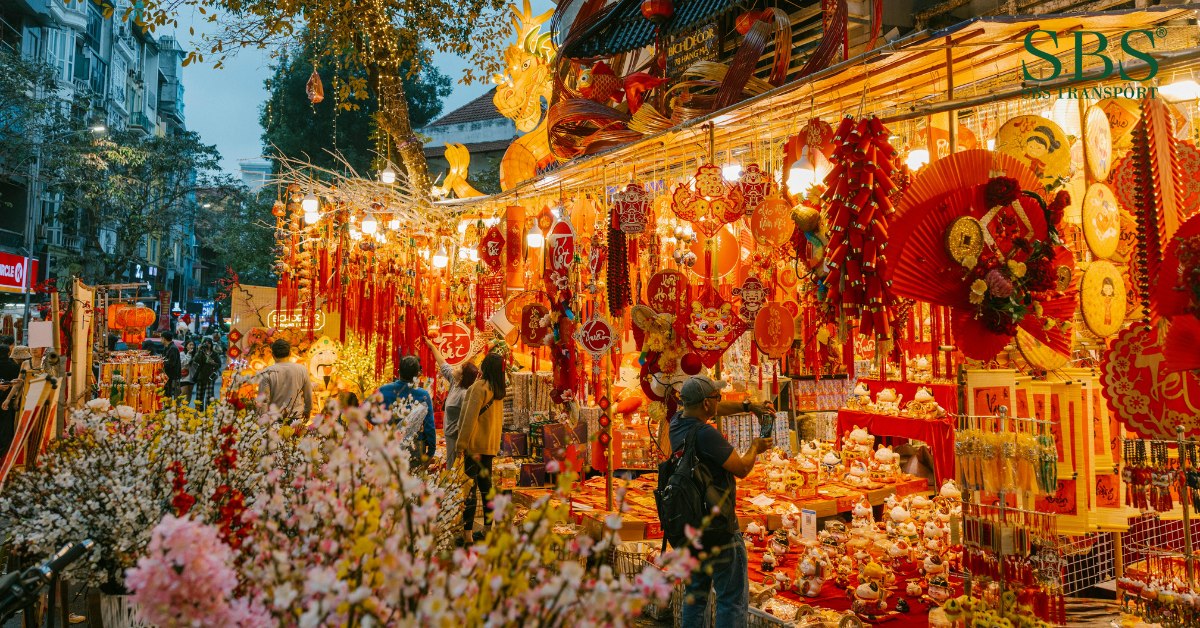
Spring travel is not just a journey to admire nature but also an activity rich in cultural and spiritual meaning for the Vietnamese people. Every Lunar New Year, as apricot and peach blossoms bloom, people set aside their busy lives to embark on spring trips with family and friends.
For Vietnamese people, spring travel is often associated with spiritual activities such as visiting pagodas, temples, and shrines to pray for peace and good fortune. Visiting famous spiritual sites like Hương Pagoda, Yên Tử Mountain, or Bái Đính Pagoda is not only an expression of reverence but also an opportunity for self-reflection, mindfulness, and prayers for a peaceful year.
Spring trips are also an occasion for family reunions, friendships, and sharing warm moments together. These trips bring joy, positive energy, and a refreshing start to the new year.
In recent years, spring travel has expanded beyond spiritual visits to include famous tourist destinations like Đà Lạt, Sa Pa, and Phú Quốc. Each location offers its own unique beauty, catering to diverse traveler preferences.
Another significant aspect of Vietnamese spring travel is participation in spring festivals. From North to South, hundreds of festivals take place, such as the Hương Pagoda Festival, Gióng Festival, and Bà Chúa Xứ Festival. These events are not only entertaining but also carry deep cultural and historical values.
In short, spring travel is not merely a journey; it reflects the Vietnamese people’s hopes, dreams, and faith in a new year filled with luck and happiness.
The Origins of Vietnam’s Spring Travel Culture
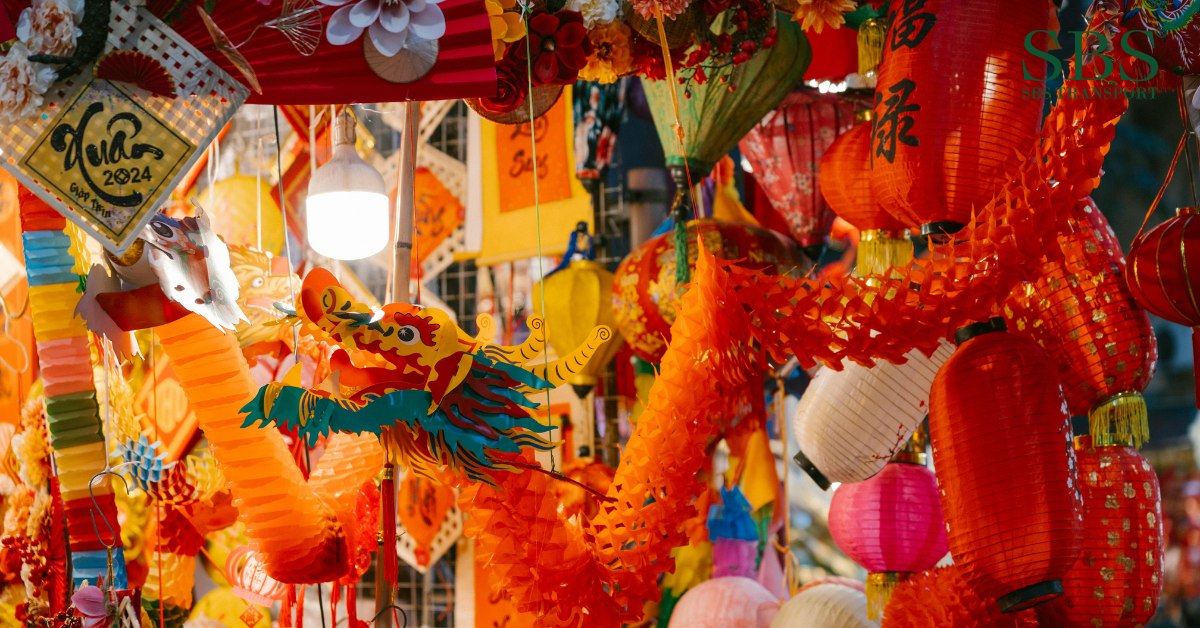
The tradition of spring travel has ancient roots, closely tied to Vietnam’s agricultural lifestyle, beliefs, and cultural identity. In the past, when the economy relied heavily on wet rice farming, spring marked the transition between the old and new years, symbolizing the beginning of a fresh agricultural cycle.
After months of hard work and harvest, Vietnamese farmers would dedicate the early days of spring to rest, leisure, and prayers for a bountiful year ahead. They believed that spring travel, temple visits, and festival participation would bring blessings, health, and prosperity.
Spring travel is also linked to ancestor worship, a key spiritual practice in Vietnam. After completing rituals at home during the Lunar New Year, families often visit pagodas, temples, or sacred sites to seek blessings and prosperity. These visits symbolize a connection between humans, the divine, nature, and their inner selves.
Spring is also the season of festivals. Across Vietnam, hundreds of large and small festivals take place, showcasing the vibrant cultural and spiritual life of the Vietnamese people. From the Hương Pagoda Festival in Hanoi and the Yên Tử Festival in Quảng Ninh to the Bà Chúa Xứ Festival in An Giang, each event tells a historical story and imparts moral lessons, attracting visitors from far and wide.
The tradition of spring travel also reflects the Vietnamese people’s optimistic and joyful spirit. During these trips, people often dress in their finest traditional attire, capture beautiful memories in photos, and cherish meaningful moments with loved ones.
Nowadays, spring travel has evolved beyond spiritual journeys into experiential and leisure tourism. Many families opt for famous destinations like Đà Lạt, Sa Pa, Phú Quốc, or coastal cities like Nha Trang and Vũng Tàu to fully enjoy the first days of the new year.
It’s clear that spring travel has become an inseparable part of Vietnamese cultural life. Despite the ups and downs of history, this beautiful tradition continues to thrive, serving as a bridge connecting generations in every Vietnamese family.
Top Spring Travel Destinations 2025 for Travel Enthusiasts
Every spring, Vietnam dons a vibrant new coat of life. This is the perfect time to explore new destinations, discover the unique culture of each region, and enjoy the fresh, peaceful atmosphere of the early year. Spring travel in 2025 promises exciting experiences at the famous destinations listed below.
Huong Pagoda (Hanoi) – A Spiritual Pilgrimage in Northern Spring
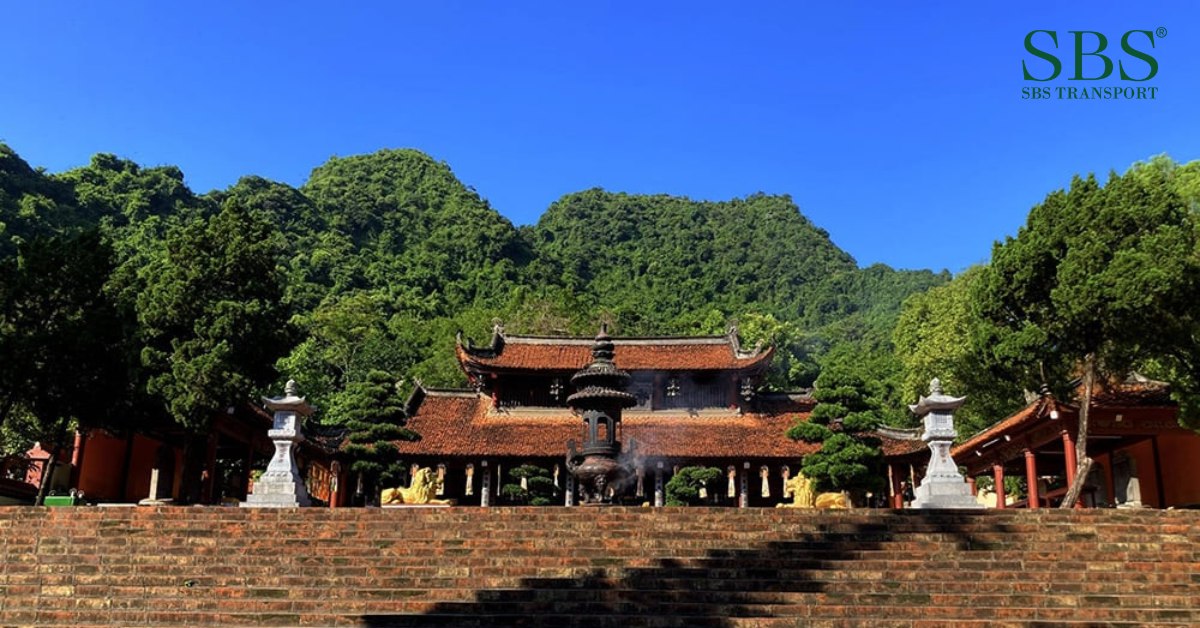
Located in Huong Son Commune, My Duc District, Hanoi, about 60 km from the city center, Huong Pagoda is not only a renowned spiritual complex but also an ideal spring travel destination. The journey to Perfume Pagoda is a harmonious blend of spirituality and breathtaking natural scenery.
The Poetic Scenery of Yen Stream
Spring trips to Huong Pagoda start from Ben Duc, where visitors board a boat to travel down Yen Stream. During spring, Yen Stream becomes magical with vibrant red Bombax flowers and pristine white apricot blossoms lining the banks. The gentle sound of rowing oars, combined with birdsong echoing through the mountains, creates a rare and serene beauty.
Key Attractions in Huong Pagoda Complex:
- Thien Tru Pagoda: The first stop after the Yen Stream journey, featuring ancient architecture with gracefully curved roofs and a spacious courtyard. Visitors can offer incense and pray for peace and prosperity.
- Huong Tich Cave: Known as “The Most Beautiful Cave in the South,” it is the most sacred spot in Huong Pagoda. Visitors can hike or take a cable car to reach the cave, which houses a statue of the Goddess of Mercy and unique stalactite formations named “Golden Tree” and “Silver Tree.”
- Giai Oan Pagoda: A place where visitors pause to seek peace and resolution for life’s burdens.
- Trinh Temple: The first stop where visitors “report” to the deities before entering the main pagoda area.
Huong Pagoda Festival – A Traditional Cultural Highlight
The Huong Pagoda Festival usually takes place from the 6th day of the Lunar New Year and lasts until the end of March. As one of Vietnam’s largest festivals, it attracts millions of visitors annually. Guests participate in prayers, enjoy traditional rituals, folk games, and taste local specialties.
Yen Tu (Quang Ninh) – A Journey to the Land of Buddhism
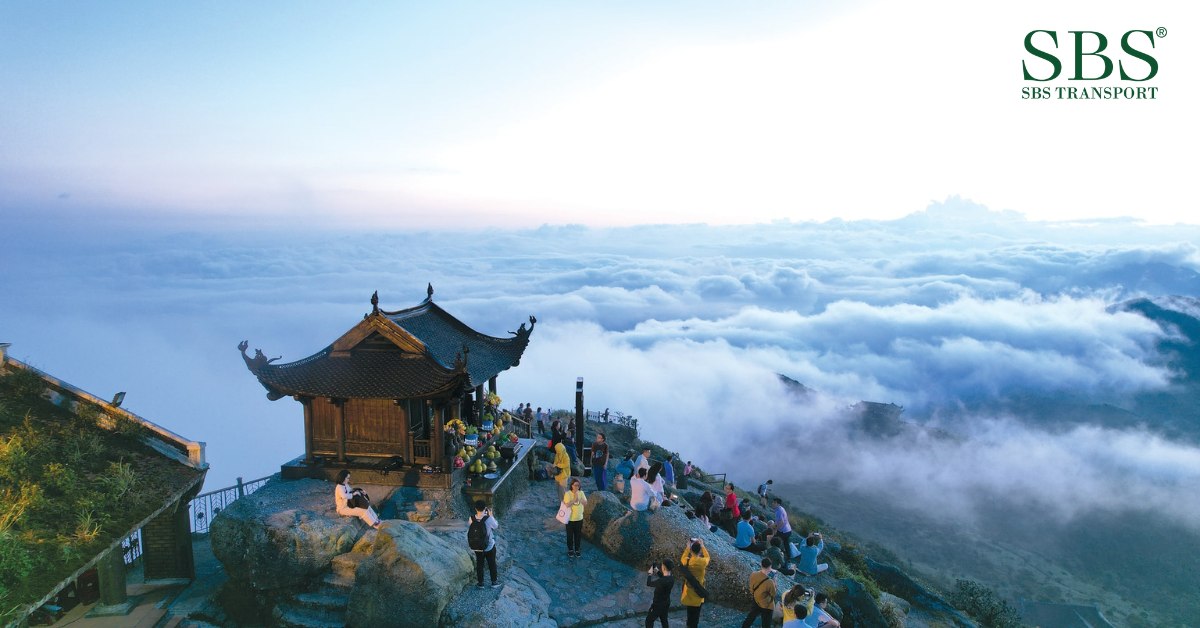
Located in Uong Bi City, Quang Ninh Province, about 120 km from Hanoi, Yen Tu is revered as the “Buddhist Capital of Vietnam,” where King Tran Nhan Tong renounced his throne to establish the Truc Lam Zen sect.
The Majestic Beauty of Yen Tu Mountain
Yen Tu boasts majestic mountain landscapes and the serene atmosphere of a Buddhist sanctuary. At 1,068 meters above sea level, the summit is home to Dong Pagoda, uniquely constructed entirely of bronze. The climb to Yen Tu’s peak is both a physical challenge and a spiritual journey.
Key Attractions in Yen Tu:
- Hoa Yen Pagoda: The largest and most beautiful pagoda on Yen Tu Mountain.
- Mot Mai Pagoda: Mysteriously nestled in a mountain cliff.
- Hue Quang Tower: The resting place of King Tran Nhan Tong’s relics.
- Dong Pagoda: Located at the peak, offering panoramic views of the surrounding mountains.
Yen Tu Festival – A Spiritual Spring Destination
The Yen Tu Festival begins on the 10th day of the Lunar New Year and lasts until the end of March, attracting pilgrims who seek health, peace, and blessings.
Da Lat (Lam Dong) – The City of a Thousand Flowers in Bloom
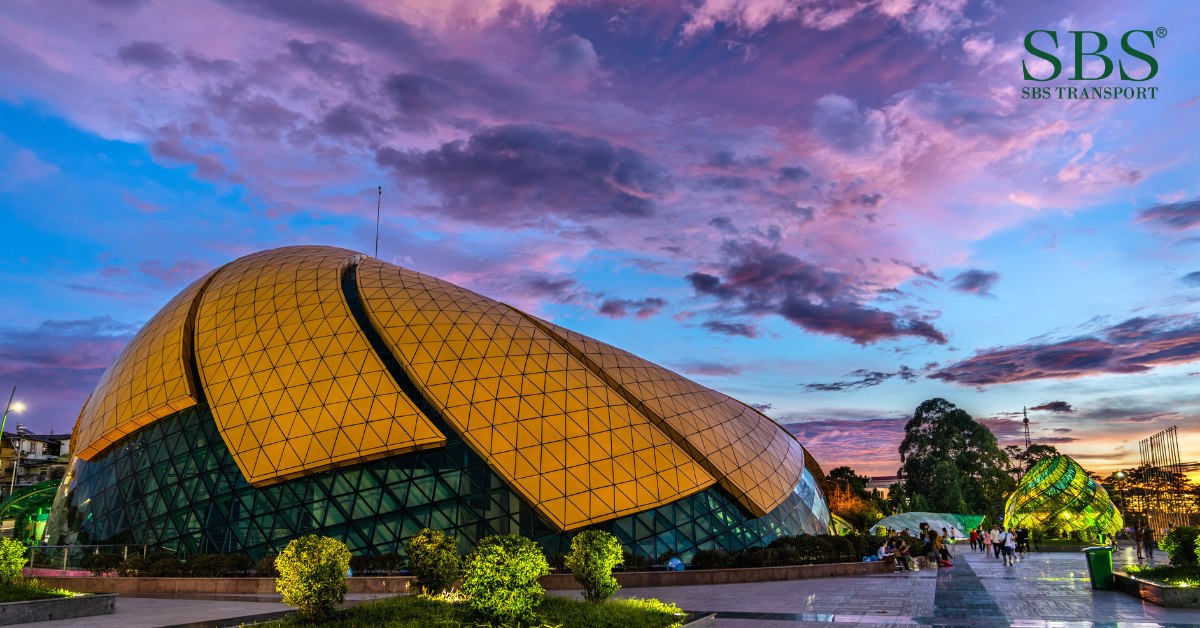
Da Lat, the city of a thousand flowers, is always an ideal spring travel destination, especially at the beginning of the year when the cool weather combines with vibrant floral displays. Located on the Lam Vien Plateau at 1,500 meters above sea level, Da Lat’s year-round temperate climate creates a romantic and refreshing atmosphere.
The Picturesque Spring Scenery of Da Lat
Spring is the most beautiful season in Da Lat. Cherry blossoms line the streets in shades of pink, hydrangeas and sunflowers bloom in abundance, and endless pine forests create a magnificent natural canvas.
Key Attractions in Da Lat:
- Xuan Huong Lake: The heart of Da Lat, offering peaceful and poetic beauty. Visitors can stroll, cycle, or enjoy coffee by the lake in the early morning.
- Cau Dat Tea Hill: About 25 km from the city center, this iconic tea hill offers stunning views, especially during misty early mornings.
- Valley of Love: Known for its romantic scenery, clear lakes, colorful flower gardens, and charming little bridges.
Exciting Activities in Spring in Da Lat:
- Attend the Da Lat Flower Festival: An annual event showcasing creative floral art displays.
- Visit Scenic Cafés: Popular spots include Me Linh Coffee Garden, The Wilder-nest, and Tiem Ca Phe Tui Mo To, offering panoramic views of the city.
- Taste Da Lat’s Cuisine: Don’t miss local delicacies such as grilled rice paper, chicken hotpot with é leaves, grilled pork skewers, and steamed rice rolls with chicken innards.
Travel Tips for Da Lat in Spring:
- Book hotels and flights early to avoid peak season shortages.
- Bring warm clothing, as Da Lat’s weather is chilly, especially in the mornings and late at night.
- Rent a motorbike for easy access to the city’s main attractions.
Phu Quoc (Kien Giang) – The Spring Paradise Island
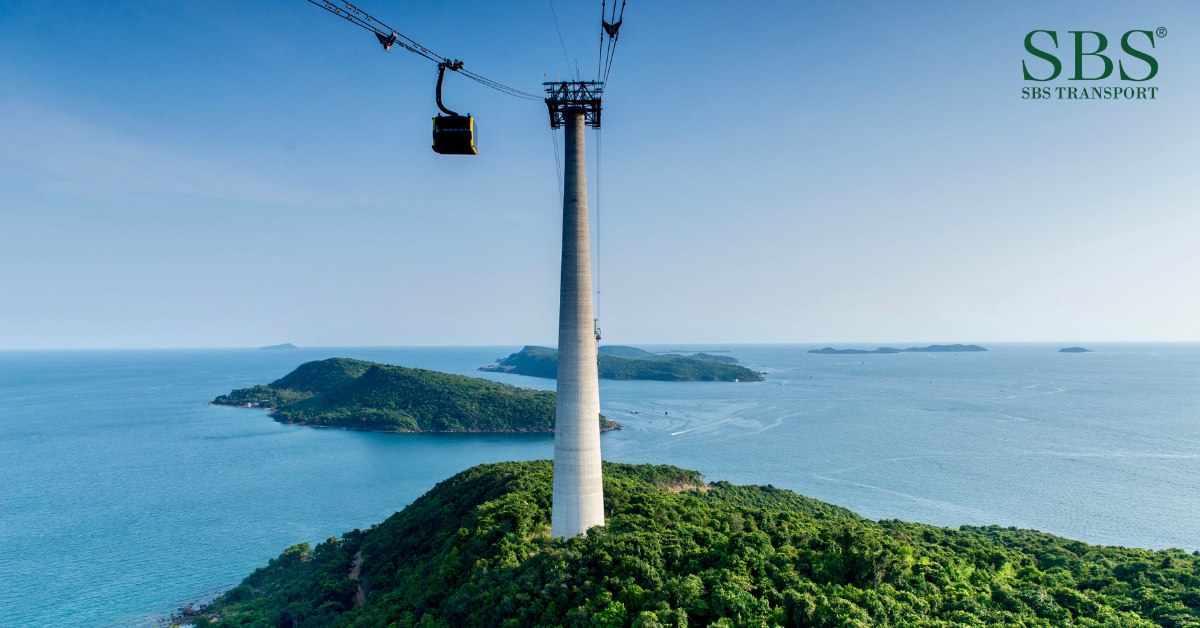
Phu Quoc, also known as the “pearl island,” is a famous tourist paradise in Vietnam. Located in the southwest of the country, Phu Quoc is surrounded by crystal-clear seawater, smooth white sandy beaches, and a diverse marine ecosystem. Spring is the ideal time for visitors to explore the pristine and charming beauty of this island.
Explore the Natural Beauty of Phu Quoc in Spring
Spring in Phu Quoc features mild weather, warm golden sunshine, and clear blue seas. It is a perfect time for outdoor activities such as swimming, snorkeling, and visiting famous destinations:
- Bai Sao: Known for its smooth white sand and crystal-clear water, Bai Sao is the perfect place to relax and immerse yourself in nature.
- VinWonders Phu Quoc: The largest amusement park in Vietnam, featuring thrilling rides, an aquarium, and children’s play areas.
- Hon Mong Tay: An ideal spot for snorkeling and discovering the underwater beauty.
- Sunset Sanato Beach Club: A picturesque check-in spot with unique decorations and stunning sunset views.
Exciting Experiences When Traveling to Phu Quoc in Spring
- Enjoy fresh seafood: Ham Ninh crab, grilled sea urchin with scallion oil, and herring salad are must-try dishes.
- Explore Ham Ninh fishing village: Witness the simple life of fishermen and buy fresh seafood.
- Visit traditional fish sauce factories: Learn about the traditional process of making Phu Quoc’s famous fish sauce.
Tips for Traveling to Phu Quoc in Spring
- Book flights and hotels at least one month in advance to avoid sold-out situations.
- Bring sunscreen, a wide-brimmed hat, and sunglasses for outdoor activities.
- Plan your itinerary carefully to maximize your time and experience.
Hoi An (Quang Nam) – Ancient Town Amidst Vibrant Spring
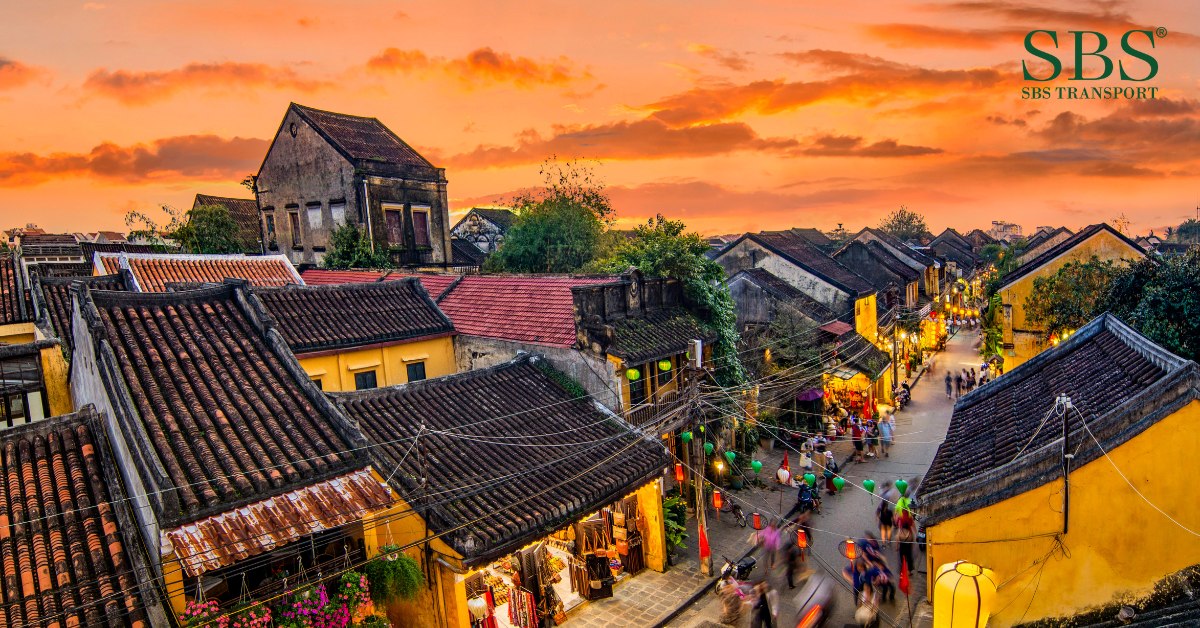
Hoi An, an ancient city on the banks of the Thu Bon River, is one of the most famous and charming destinations in Vietnam. Recognized as a UNESCO World Heritage Site, Hoi An not only boasts ancient architectural beauty but also preserves valuable traditional cultural values. During spring, the ancient town dons a vibrant coat of yellow spring sunlight, red lanterns, and pink blossoms.
The Beauty of Hoi An in Spring
Spring is an ideal time to visit Hoi An. The cool, pleasant atmosphere, along with the beauty of moss-covered alleys and shimmering lantern lights at night, creates a romantic and peaceful space.
- Hoi An Ancient Town: Small moss-covered alleys, ancient tiled roofs, and characteristic yellow walls are iconic images of Hoi An. Each street tells a historical story, and every old house is a witness of time.
- Hoai River: Releasing floating lanterns on the Hoai River at night is an unforgettable experience. The shimmering lantern lights carry wishes for peace and happiness.
- Japanese Covered Bridge: A famous symbol of Hoi An, where visitors often stop to take photos and admire its unique architecture.
Exciting Activities in Spring in Hoi An
- Stroll through Hoi An at night: The ancient town sparkles with vibrant lantern lights at night. It’s the perfect time to walk, take photos, and enjoy the peaceful atmosphere.
- Taste Hoi An cuisine: During spring, dishes like Cao Lau, Phuong Bread, and Hoi An Chicken Rice become even more appealing.
- Join spring festivals: Hoi An hosts many traditional festivals such as the Cau Bong Festival and the Tet Nguyen Tieu Festival, rich in local cultural identity.
- Check-in at beautiful cafes: Hoi An is famous for its nostalgic cafes like Faifo Coffee, The Chef, and Cocobox, where you can enjoy panoramic views of the ancient town from above.
Unique Cultural Experiences
Hoi An is not only attractive for its architectural and natural beauty but also for its deep cultural and historical values. Traditional craft villages such as Thanh Ha Pottery Village, Kim Bong Carpentry Village, and Tra Que Vegetable Village still preserve exquisite craftsmanship and a diligent working spirit.
Tay Ninh – The Sacred Ba Den Mountain Amidst Fresh Spring
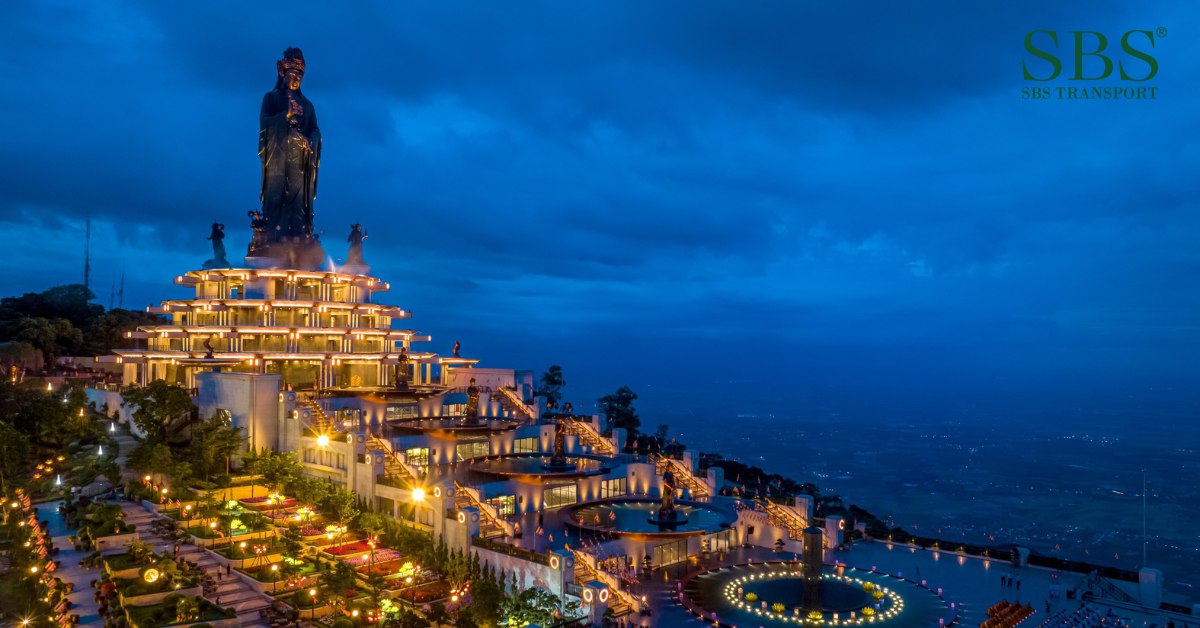
Tay Ninh, located in Southeast Vietnam, is famous for Ba Den Mountain – the highest mountain in southern Vietnam. This spiritual spring pilgrimage destination attracts millions of visitors every year. Tay Ninh is not only a sacred pilgrimage site but also a place of majestic and magnificent natural landscapes.
The Mysterious Beauty of Ba Den Mountain
Ba Den Mountain stands 986 meters high and is known as the “roof of the South.” Visitors can either hike or use the modern cable car system to reach the top. From above, you can admire the vast plains and the poetic Dau Tieng Lake.
- Ba Den Pagoda: One of the most sacred destinations in Tay Ninh, built in the 18th century, where visitors often come to pray for peace and luck in the new year.
- Tay Bo Da Son Buddha Statue: A giant 72-meter-high Buddha statue majestically standing on the mountain peak, bringing a sense of peace and tranquility.
- Ba Den Mountain Cable Car System: Offers a fantastic experience with panoramic views of the natural beauty below.
Exciting Activities in Tay Ninh During Spring
- Pilgrimage to Ba Den Pagoda: This is a must-do activity every spring, with visitors from all over coming to pray for a peaceful and prosperous new year.
- Check-in at the mountain peak: From the top of the mountain, you can take in breathtaking views of the vast plains and Dau Tieng Lake.
- Visit the Cao Dai Holy See: An iconic architectural landmark and cultural symbol of Tay Ninh.
Tips for Traveling to Tay Ninh in Spring
- Prepare sports shoes and comfortable clothes for easier movement.
- Bring water and light snacks if hiking on foot.
- Follow temple regulations and maintain general cleanliness.
Here are the spring travel destinations for 2025 recommended by SBS Transport for travel enthusiasts across the country. You can choose any destination that suits your mobility, preferences, and budget for the 2025 Lunar New Year holiday.
No matter where you choose to go, SBS Transport will always accompany you on every journey, from pilgrimages to spring trips and adventures across the country.


